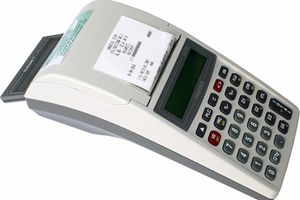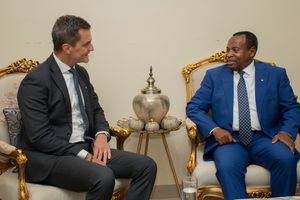How EAC can boost exports to rest of Africa

Lorries transporting goods to Zambia and DR Congo queue near the Tunduma border post in Tanzania. PHOTO | FILE
What you need to know:
- The East African Community (EAC) bloc has been urged to aggressively invest in import substitution industries (ISIs) to promote exports
Arusha. The East African Community (EAC) bloc has been urged to aggressively invest in import substitution industries (ISIs) to promote exports.
This will give the region, which trades more with the rest of the world than Africa, an edge in intra-African trade.
Increased exports through local manufacturing would additionally reduce existing trade gaps from soaring imports.
These are among the recommendations made by a just concluded study which examined trade implications for the bloc under the African Continental Free Trade Area (AfCFTA) agreement.
The study by the East African Business Council (EABC) urged the EAC member countries to complement ISIs by embracing various AfCFTA instruments.
Those already operational include Pan African Payment and Settlement System (PAPSS) but which is yet to be accessible to some partner states.
Intensive investment in the EAC manufacturing sector would also enable the region to promote value addition and product diversification.
The study revealed untapped trade potential between the EAC countries which, it says, needs to be leveraged following AfCFTA tariff liberalisation.
It was found out that the EAC partner states import more from the rest of Africa than they export, creating a trade gap that presents an opportunity that needs to be addressed.
“The business community in EA should focus their production on goods that EAC and the rest of Africa countries source from the rest of the world,” the report said.
On average, 80 percent of EAC countries exports went to the rest of the world and consisted of mainly primary products.
On the other hand, 81 percent of their (EAC states) imports came from the rest of the world and largely consisted of secondary products.
The report said only 20 percent of EAC countries’ exports and 19 percent of imports came from the rest of Africa and were mainly primary products.
“Notably, EAC countries imported more from the rest of Africa than they exported, creating a trade gap that presents an opportunity for business,” it emphasised.
Trade between EAC countries and the rest of Africa, though, was on a downward trend in between 2003 and 2022, the period under study.
This was partly attributed to none of the EAC partner states having a revealed comparative advantage in commodity grouping with the largest export share.
“This points to underutilised trade potential for the EAC countries, which the business community can focus on to scale up exports from the EAC to the rest of Africa,” it said.
The EAC partner states -they are now eight after the entry of Somalia last November - are blamed for being over reliant on exports of primary products.
“This is a clear indication of the existence of latent capacity in the EAC region for value chain integration,” stated a report, a copy of which was obtained by The Citizen.
It added; “The business community in the region will therefore have to improve its individual and collective efficiency to compete favourably in the larger market”.
The report warned of the challenges that will face the EAC economies with full implementation of the AfCFTA tariff liberalisation modalities.
All the partner states are set to experience a significant surge of imports from the rest of Africa while intense competition will likely drive weaker enterprises out of business.
Some EAC partner states do not have sufficient testing and certification infrastructure for sanitary and phytosanitary (SPS) and trade barriers to trade (TBT) measures.
This greatly inconveniences small scale traders, in addition to increasing the cost of doing business. Elsewhere, such instruments are not operational in some countries.
These include the PAPSS and online mechanisms for non-tariff barriers (NTBs) which todate are not accessible from some partner states.
“To reduce the cost of doing business, it is critical that all the governments in EAC subscribe to these instruments,” the report stressed.
To allow EAC to implement its commitments under the AfCFTA as a customs union, it is mandatory for countries to put in place all the requisite domestic frameworks and infrastructure.
AfCFTA was established in 2018 by 44out of 55 African Union (AU) member countries. To date, 54 of 55 AU partner states have ratified the trade pact.
The AfCFTA aims to create a single market for goods and services in Africa, increase intra-Africa trade as well as liberalise the movement of goods and services.



